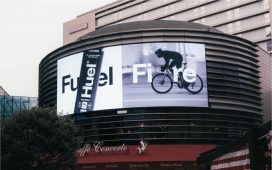Consequently, now that final creative product is easier to achieve, the process of creation itself and the story at the core of content becomes more important. That’s where lo-fi content wins. It allows us to strip creative of glamorous production techniques and breathe meaning into content by favoring the journey over the picture-perfect—boring—result. Think behind-the-scenes creative, livestreams and leveraging user-generated content.
The conventional social media networks, like Facebook and Instagram, started out as tools for people to connect with others, share with friends and family, and identify communities of like-minded folks. But as those platforms were monetized, they fell captive to brands, creators and publishers, who skewed the landscape toward entertainment. That, in turn, stripped social media of its original purpose and raised the expectations for content quality. While AI accelerates the content race, rapidly flooding our feeds, many users, perhaps unknowingly, revolt—some in the form of joining emerging platforms, others by sharing even less adulterated content.
What if the modern lo-fi sensibility of recognizable iPhone photo quality, abrupt storytelling and photo dumps are the craftsman’s marks of our time—a token of value and authenticity in the age of mass content production? In this case, lo-fi creative may well be the answer to the content overload ailing social media dwellers, a way for marketers to AI-proof their efforts and zag in the age of content automation. We should expect brands and advertisers to lean further into perfectly imperfect marketing, focusing on more meaningful stories.
READ SOURCE











